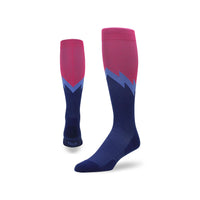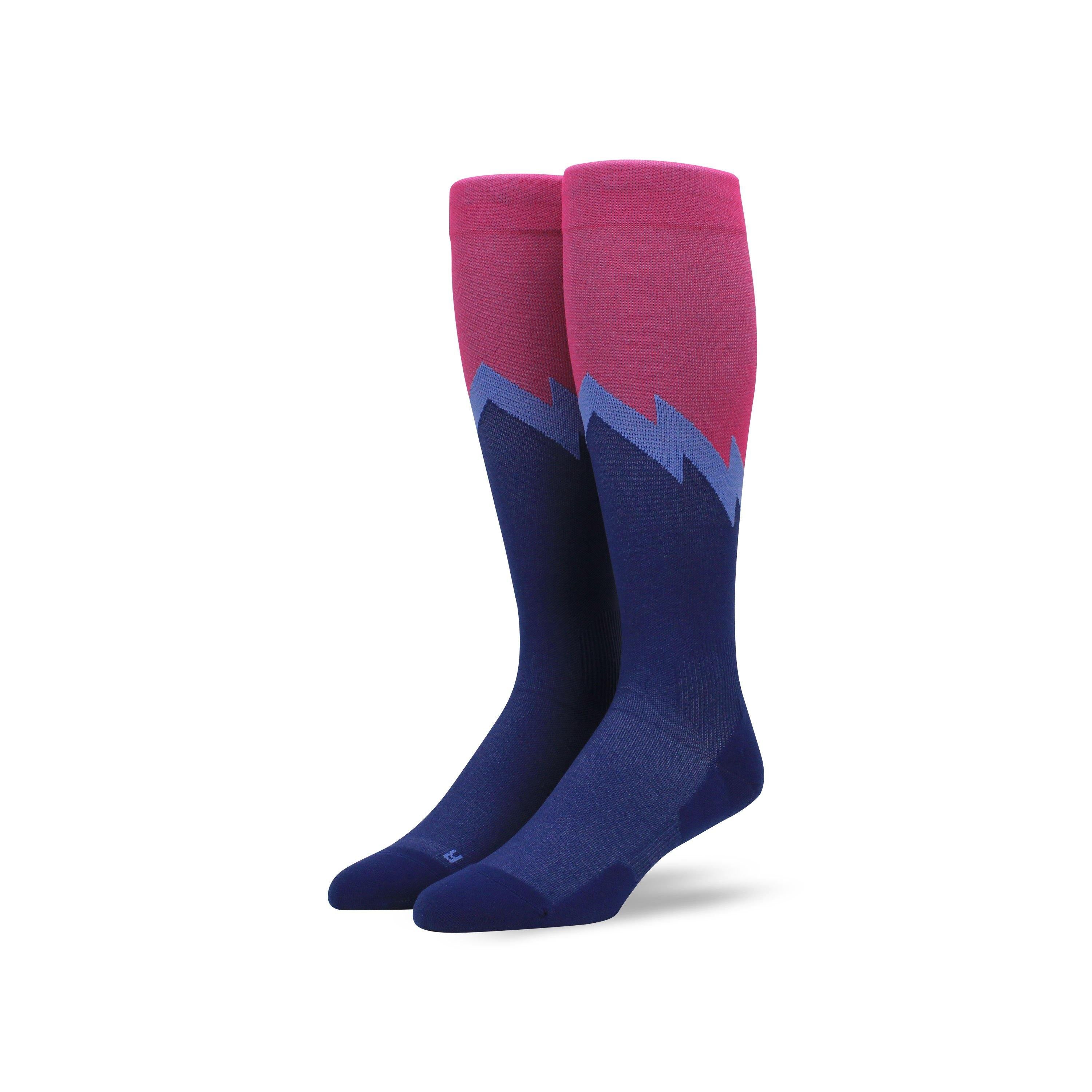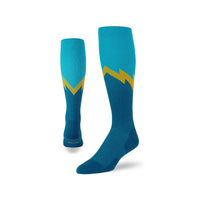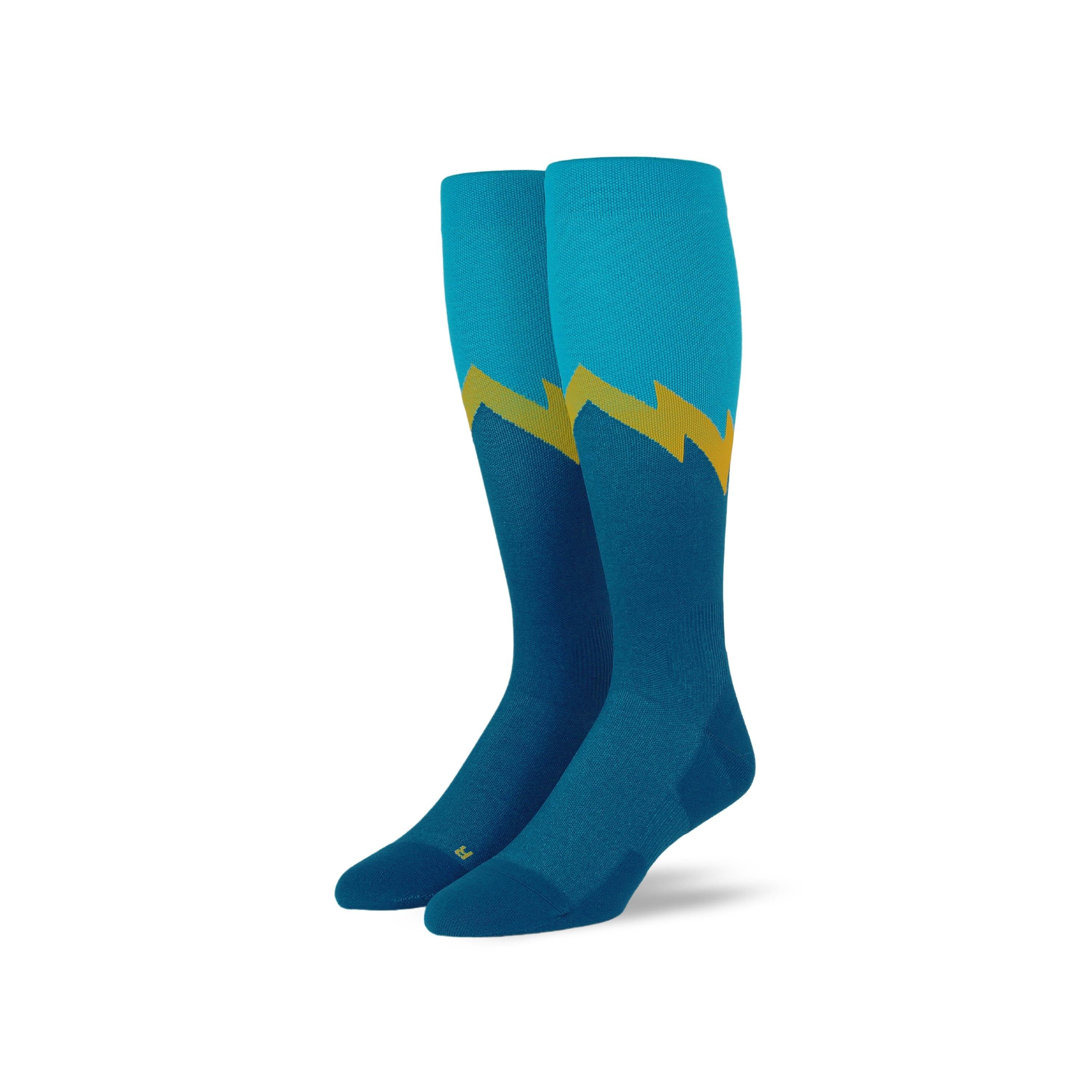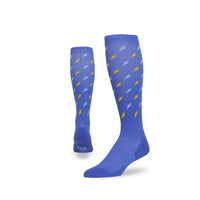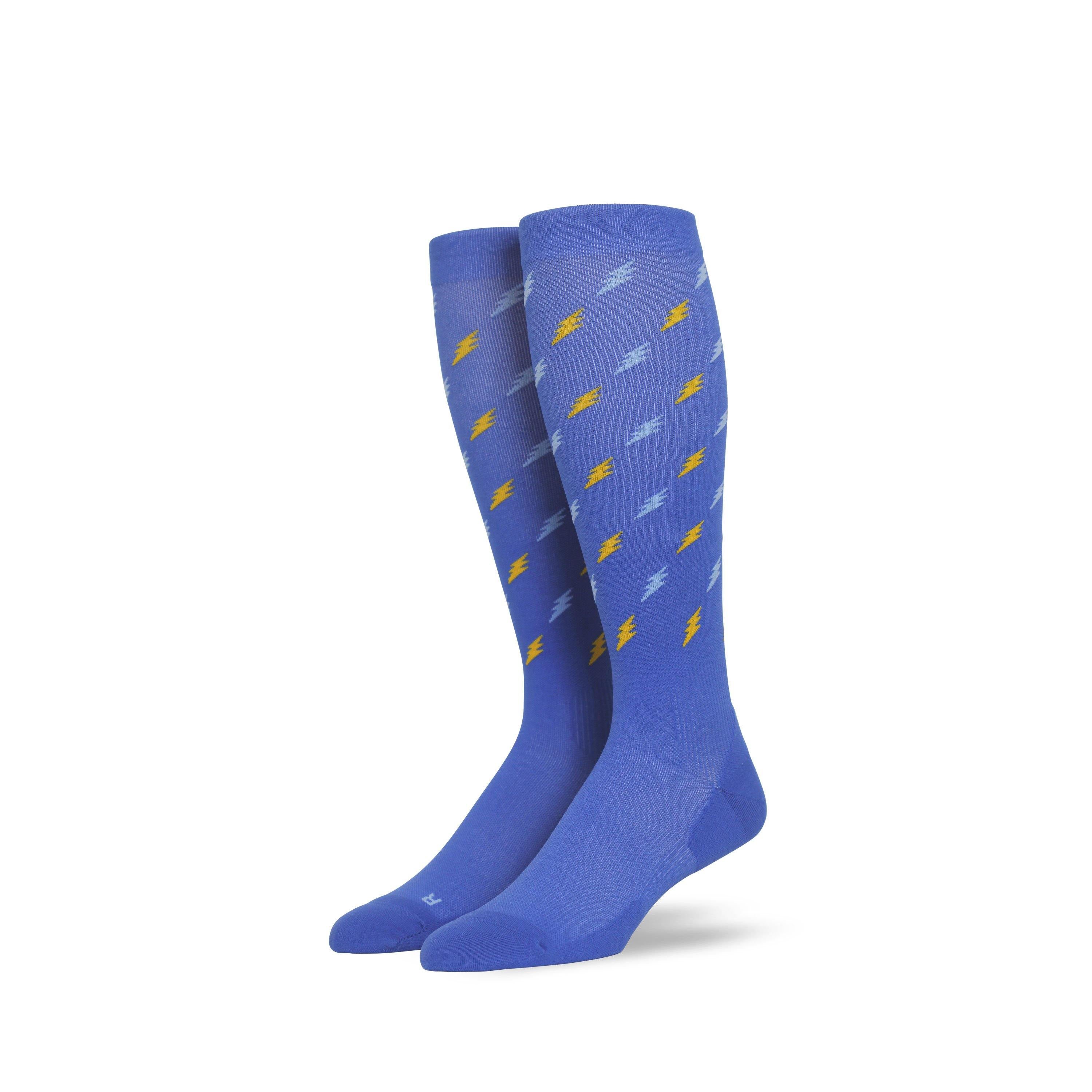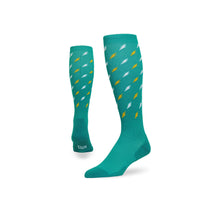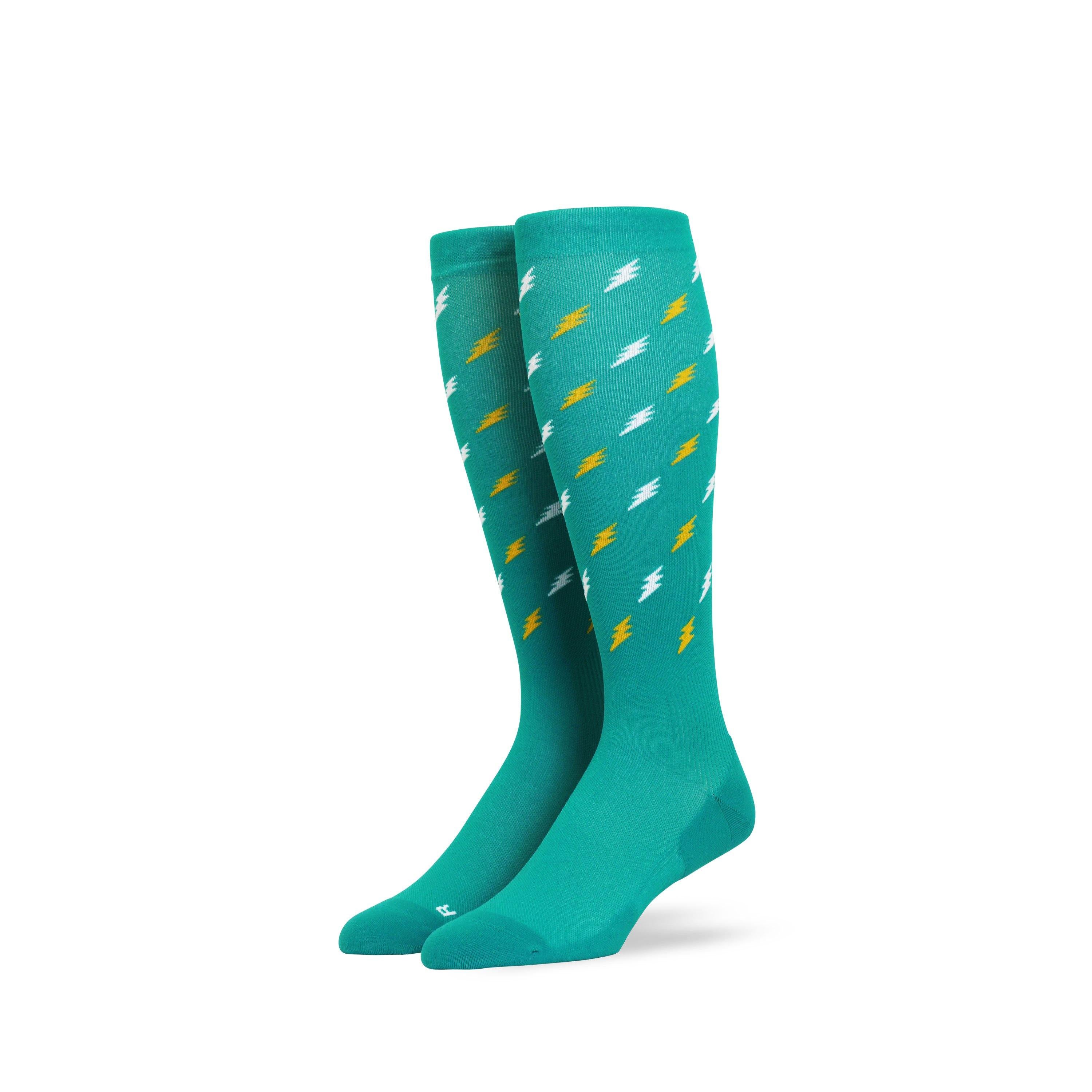Compression Socks for Running
How Compression Socks Work | Selecting the Right Pair | Proper Wear & Care | Benefits | Scientific Evidence

When watching a race, you might have noticed elite runners wearing compression socks. These aren't just a fashion statement. They have been shown to offer multiple benefits for athletes, especially runners. If you're wondering, "Are compression socks good for running?" or "Should you wear compression socks while running?" then you're in the right place. We'll explore the benefits of compression socks and explain why they are becoming increasingly popular among the running community.
How Do Compression Socks Work?
Graduated compression socks are specifically designed to promote healthy blood flow in the legs, addressing the challenge of gravity in returning blood from the lower extremities back to the heart. As the compression is tightest at the ankle and reduces higher up the leg, it encourages blood to flow back up, preventing it from pooling in the lower legs. Enhanced circulation and greater venous wall support are just some of the outcomes, leading to improved venous return and overall better performance.
Compression Socks and Their Impact on Performance
Understanding the benefits of compression socks requires diving into the basics of blood flow. Your heart, the central muscle involved, pumps oxygen-rich blood throughout the body. The more efficiently this blood circulates, especially through the legs during a run, the better your performance. Running with compression socks ensures optimal circulation, enabling muscles to function at their best. So, in essence, the more oxygen your legs receive, the better they perform.
The Link Between Training, Inflammation, and Compression Socks
Inflammation, often seen as a negative response, is the body's way of repairing after intense exercises. Athletes rely on the tear/repair cycle for muscle strength. But, overtraining can lead to chronic inflammation, resulting in tired, heavy legs, and decreased performance. Using compression socks while running helps in reducing this inflammation, leading to better overall physical well-being.
Running Compression Socks: Features to Consider
Runners who are serious about their sport know that not all compression socks are made equal. When choosing the ideal pair, it's crucial to focus on several features. These include a padded footbed for shock absorption, calf support, and a well-designed cuff that does not restrict circulation. Ensuring a snug fit and the right compression level can make all the difference, leading to faster post-run recovery and an enhanced running performance.
Selecting the Perfect Compression Socks for Running
When you're in the market for compression socks for runners, certain factors are vital:
Height
- Why It Matters: The height of your compression socks can influence both comfort and function. Knee-high socks, for instance, provide compression to the entire calf, which can aid in circulation and muscle support.
- What to Look For: While knee-high socks are favored by most runners because they cover from the toes to just below the knee, some might prefer shorter lengths for specific reasons, like temperature or personal comfort. It's essential to know your preference and what works best for your running style and environment.
Compression Level
- Why It Matters: The compression level determines how tight the sock feels on your leg. Different activities and conditions might necessitate various compression levels.
- What to Look For: Compression socks come in various levels, usually indicated in mmHg (millimeters of mercury). For runners, common levels include moderate compression, which ranges from 15-20 mmHg, and firm compression, which spans 20-30 mmHg. If you're unsure about which is best suited for you, always consult a physician or sports therapist. They can guide you to the ideal pressure level for your needs.
Proper Fitting
- Why It Matters: A well-fitting compression sock provides the intended benefits without being too constricting or too loose. A sock that's too tight can restrict circulation, defeating its purpose, while a too-loose sock might not offer adequate compression.
- What to Look For: Start by measuring the widest part of your calf. This measurement will play a significant role in determining the right size, as the calf area experiences the most compression. Don't overlook your shoe size. This helps ensure the foot section of the sock isn't too snug or too roomy. A good fit here can prevent potential discomfort, especially during long runs.
Browse Compression Socks For Running >>
How to Put On Compression Socks Properly
Putting on compression running socks can be slightly more challenging than your regular socks due to their snug fit. However, with the right technique, it becomes an easy task. Here's a step-by-step guide to help you wear them correctly:
-
Prepare Your Foot and Leg: Ensure your leg is dry. If you've applied lotion, let it dry fully. Remove any jewelry like anklets or toe rings.
-
Turn the Sock Inside Out: Grab the sock from the top, pulling it inside out until you reach the heel.
-
Place Your Foot Inside: Slide your toes into the toe section of the sock, ensuring they fit snugly and are positioned correctly.
-
Roll the Sock Up: Start from the ankle, gradually rolling and pulling the sock upwards. Ensure the sock is smooth and without any wrinkles or bunching. The highest compression should be at the ankle and should decrease as you move up the leg.
-
Adjust for Comfort: Once the sock is on, double-check the toe area to make sure it's smooth and comfortable. The heel should fit into the heel pocket of the sock. If it doesn't, make slight adjustments by gently tugging or repositioning.
-
Smooth Out Any Wrinkles: This is vital as wrinkles can disrupt the graduated compression and can be uncomfortable.
Proper Care for Your Running Compression Socks
Taking good care of your compression socks is essential to guarantee their durability and performance. Proper maintenance will not only extend the life of the socks but also ensure that they continue to provide optimal compression for your runs. Here are some steps and tips to care for your compression socks:
-
Wash After Each Use: It's essential to wash your socks after every use to remove sweat, dirt, and oils from the skin, which can affect the material and elasticity.
-
Hand Wash for Best Results: Hand washing is gentler on the fibers of the sock. Use lukewarm water and a mild detergent. Gently squeeze the socks; avoid wringing them out as this can stretch the fibers.
-
Machine Washing: If you're using a washing machine, place the socks inside a mesh laundry bag to protect them. Select a gentle cycle and use cold to lukewarm water. Avoid using bleach or fabric softeners as these can degrade the fibers and reduce the sock's effectiveness.
-
Air Dry: To maintain the elasticity and shape of the socks, air dry them by laying them flat on a towel. Avoid hanging them as this can stretch the material. Do not expose the socks to direct sunlight or use a tumble dryer, as high heat can weaken the fibers.
-
Avoid Ironing: Compression socks should not be ironed. The heat can damage the elastic fibers.
-
Store Properly: Once the socks are completely dry, store them in a cool, dry place. Avoid folding or rolling them too tightly, as this can strain the material.
-
Inspect Regularly: Over time, compression socks can wear out and lose their effectiveness. Regularly inspect them for signs of wear, such as thinning areas, holes, or reduced elasticity. Replace socks that show signs of wear to ensure you continue to benefit from the proper compression level.
With proper care, your compression socks will remain an effective and durable part of your running gear, supporting your performance and recovery for many miles to come.
Benefits of Wearing Compression Socks for Running
"Why do runners wear compression socks?" This question often arises, and the answer goes beyond mere fashion. Both scientific studies and feedback from athletes highlight the multifaceted advantages of using these socks during runs. Here's a deeper dive into their benefits:
Enhanced Athletic Performance
- Improved Blood Circulation: Compression socks promote better blood flow, ensuring that your muscles are adequately oxygenated, which can improve endurance and stamina.
- Muscle Fatigue Mitigation: The consistent pressure from the socks can decrease the rate at which muscles tire, allowing runners to maintain their pace for longer.
- Optimal Oxygenation: By aiding blood return to the heart, compression socks ensure that oxygen is quickly delivered to the muscles, boosting overall performance.
Speedy Recovery
- Reduced Swelling: The socks provide consistent pressure, which can limit the buildup of fluid and thus reduce swelling post-run.
- Diminished Soreness: By enhancing blood flow, the socks can help in flushing out lactic acid more efficiently, leading to decreased muscle soreness after intense workouts.
Safer Travel for Athletes
- Blood Clot Prevention: For athletes who often travel long distances, wearing compression socks can be a preventive measure against the formation of blood clots, a potential complication of prolonged immobility.
Reduced Injury Risk
- Optimal Venous Return: The socks promote the return of deoxygenated blood back to the heart, preventing it from pooling in the veins, which can be a precursor to injuries.
Protection from Harsh Elements
- Warmth in Cold Climates: Compression socks act as an insulating layer, providing warmth during cold runs and ensuring that the blood continues to flow efficiently to the extremities.
- Shield on the Trails: For those who enjoy trail running, these socks offer protection against potential cuts, abrasions, and even harmful plant exposures.
Muscle Stability and Enhanced Efficiency
- Vibration Reduction: One of the lesser-known benefits, compression socks can minimize muscle oscillations during runs, which can improve stability and reduce the risk of micro-injuries.
Protection Against Muscle Damage and Support in Recovery
- Muscle Health: Wearing compression socks has been linked to a reduction in muscle damage during strenuous activities, ensuring runners can get back to their routines faster.
- Aiding Recovery: The consistent pressure these socks offer can assist in the quick removal of metabolic waste from muscles, facilitating quicker recovery and reducing downtime after a heavy run.
Is There Any Scientific Backing?
Yes! Studies have shown that athletes wearing compression socks post-marathon for 48 hours recover faster than those without. Another research confirms the positive effects of these socks on blood flow and volume. Plus, the worldwide running community stands by them.
The trend of wearing compression socks for running isn't just about looking stylish. With ample evidence supporting their benefits, from enhanced performance to faster recovery, it's clear that they are a worthy addition to any runner's gear. Whether you're a novice or an elite runner, understanding the benefits of compression socks for running and incorporating them into your routine can pave the way for better performance and health.

